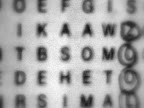NYT Public Editor Takes up False Equivalence on Voter Fraud; Sifton and Bronner Make Fools of Selves; Blogosphere Laments
A few things to follow up on here.
I'm quoted in the Public Editor's column in Sunday's NYTimes, as a critic saying the Times shouldn't do he-said-she-said reporting. The focus of the column was a disappointing article from last Monday on voter fraud, which I critiqued here at the time ("Ethan Bronner goes murky on voter fraud on New York Times A1"). In that post and in my email to the new Public Editor, Margaret Sullivan, I noted three examples (1, 2, 3) where the Times itself had reported pretty clearly on the matter in the past, explaining how the claims of voter fraud are mostly bunk.
And there's actually a good new example, on today's front page, a 3100-word piece from Stephanie Saul about how True the Vote and other groups are focused on "stopping" voter fraud, yet can't seem to come up with much evidence of it.
In Sullivan's column, NYT national editor Sam Sifton and national legal reporter Ethan Bronner give some rather horrid quotes doubling down in defense of Bronner's article, and that's rightly been criticized, starting with Kevin Drum. Andrew Cohen goes a bit further into how there's really not so much question at all on the substance of the issue. See more too from Jamelle Bouie, Peter Hart, and Choire Sicha. Bob Sommerby gives a comprehensive critique of Sullivan's column, happy that she brought up the issue and got these absurd quotes from Sifton and Bronner, but somewhat unimpressed where she left off.
I think it's somewhat hard to tell where she is -- on the one hand, her column itself sort of just presented two sides without saying who she thinks is right. On the other, she might have been letting the absurd Sifton and Bronner quotes stand by themselves, and she might come back to this, too.
Anyway, I really, really think there must be a number of NYT editors who do not like the Sifton and Bronner quotes. Those two are just wrong, and what they said is also an insult to all of the good work that is so often done in the NYT. People in the business side of the paper might not like the quotes either -- I mean what's the point of people paying for the NYT if it's just going to aggregate what both sides say? You can get that for free lots of places.
I'll wind this down with Eric Boehlert on the big picture:
Sullivan's piece serves as a reminder that readers are in search of the truth. But here's what was missing from Sullivan's exploration: The specific acknowledgement that the false balance conundrum journalists face stems from the conservative movement, and especially the conservative media, which have embraced misinformation as a central tenet.
In other words, false balance is the intended byproduct of the Right-Wing Noise Machine, which was built to misinform followers and to intimidate the press into accepting, or legitimizing, that partisan misinformation. This is not a liberal-conservative or Republican-Democratic problem that journalists must wrestle with. It is without question a problem hoisted on the press by the far right. And that point is salient to this media debate.
Look at the examples Sullivan cites where questions of false balance have arisen at the Times in recent years: Rep. Paul Ryan's convention speech, climate change, voter fraud and intelligent design.
All of those topics germinated from the conservative movement and the conservative media, which have aggressively moved in recent years to construct their own parallel universe (or echo chamber) where their distinct set of 'facts' rule.Update 9/21: More commentary I missed previously: Digby and James Fallows.


0 Comments:
Post a Comment
<< Home